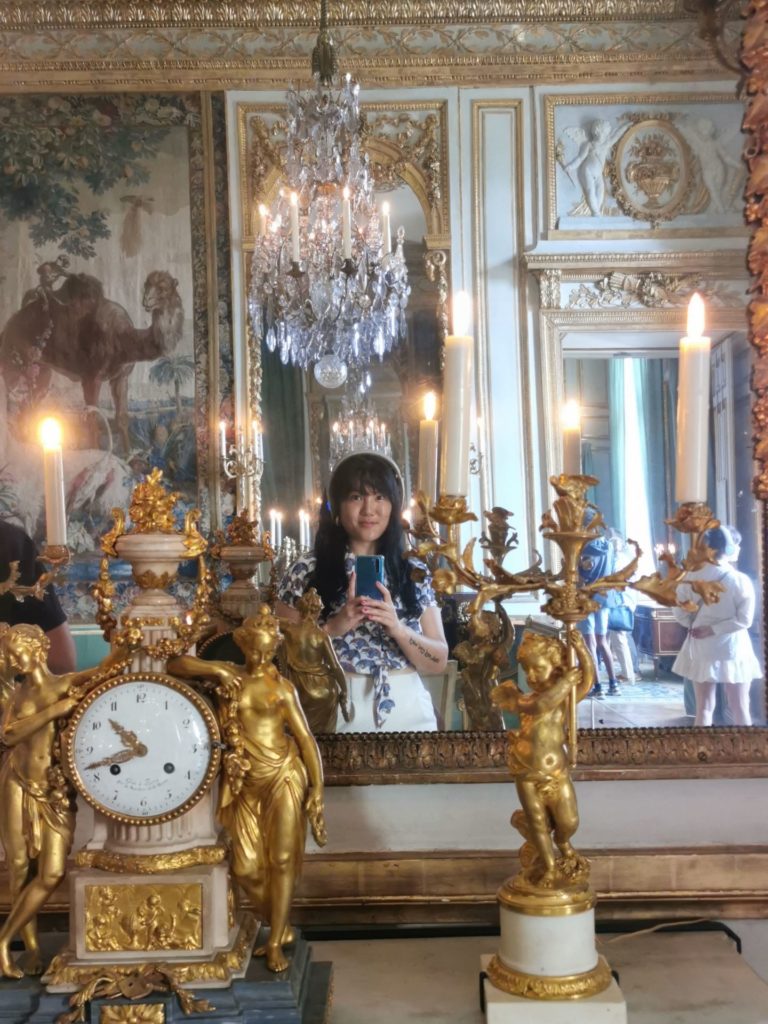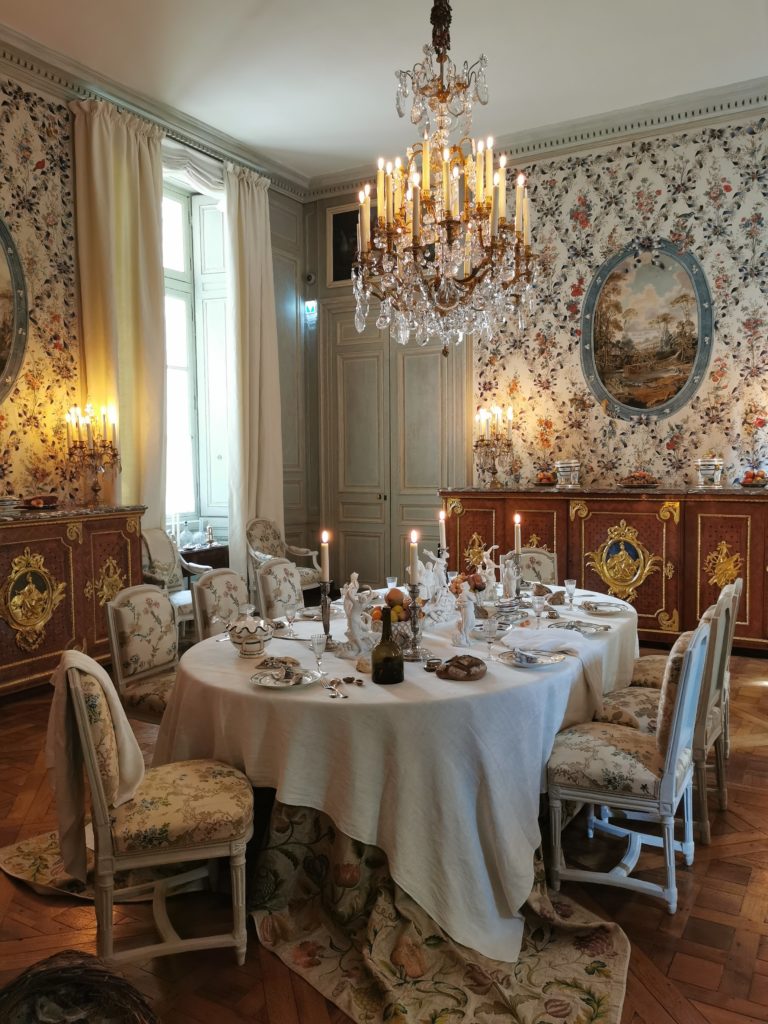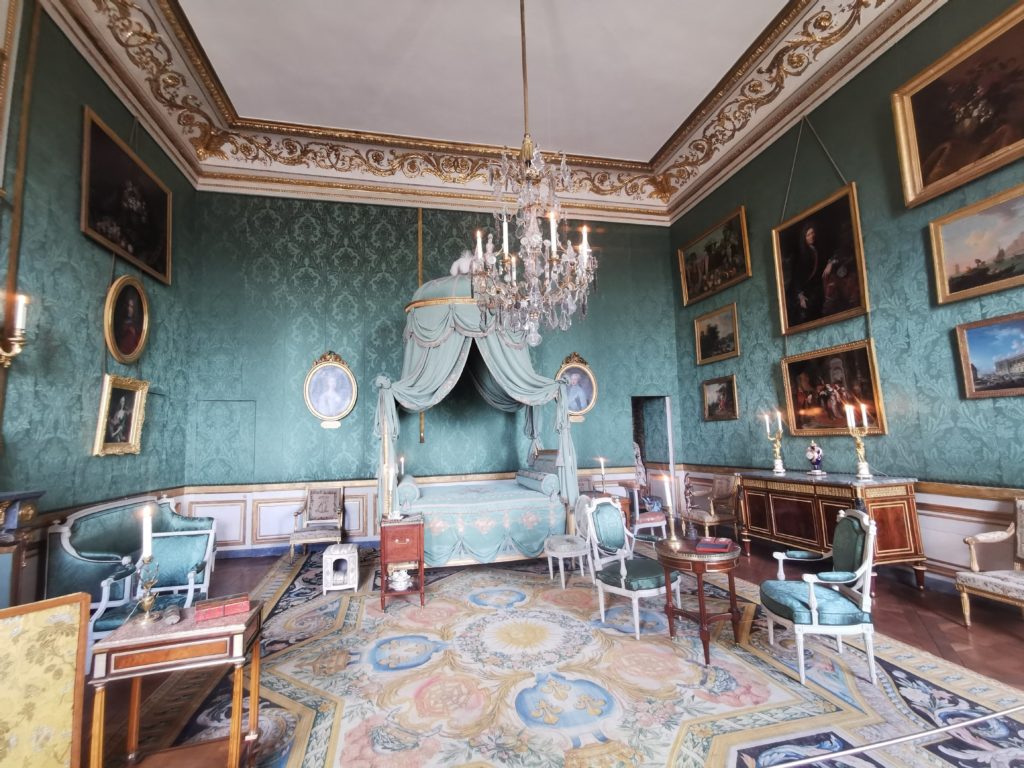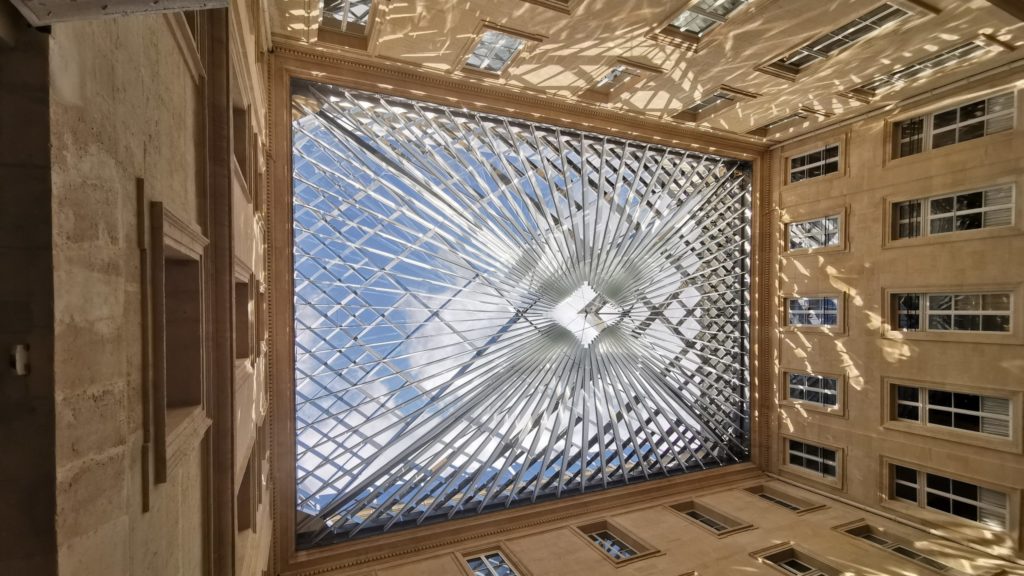The recently renovated Hotel de la Marine, located on Place de la Concorde in Paris, blew me away with its interactive visit last summer. With my audio guide and the voice of an actor embodying an 18th-century “royal intendant”, I thought to myself: “This is what a museum in the 21st century should look like!”
From the royal “garde-meuble” to the current Hotel de la Marine

I had never heard of the Hotel de la Marine before this year – and with reason: under renovation for many years, it reopened only at the end of the covid-19 confinement period. Yet, it’s one of the largest buildings on Place de la Concorde in Paris, dating from the end of the 18th century. It can’t be missed, with its impressive façade, in a “Louis XV-style”! And it’s now possible to discover it in one of the nicest ways: through a location-sensitive audioguide, voices of the former Intendant (the person managing the building when it used to be the royal “Garde-Meuble”) and people who used to run, live and work in the immense building, will tell you its story.
Until 1798, the magnificent building facing the obélisque housed the “Garde-Meuble de la Couronne” (the administration managing the king’s furniture and all the decoration of his palaces), which has also been the very first version of a Museum for Decorative Arts. Works of decoration, marquetry, and furniture used to be exhibited in a gallery for royal visitors to admire.
Under Napoléon Bonaparte, it became the headquarters of France’s navy ministry. The Garde-Meuble was dismantled, as it was a symbol of the monarchy, but then the institution was revived as the “Mobilier National” (the National Furniture Service, if you wish). Its architecture bears traces of its former function: delicate marquetry, tapestries, and furniture ornate its large dining rooms and bedrooms, gold-framed mirrors pave the corridors and shiny chandeliers illuminate an impressive ballroom. The original architect, Ange-Jacques Gabriel, had designed a building meant to shine, as its commissioner King Louis XV had much to prove after the splendor of his predecessor’s reign.



The sensorial journey through an 18th-century palace
First, the intendant (supposedly the voice of Thierry de Ville d’Avray, the second but most famous Intendant, who structured and organized the Garde-Meuble management in the 1780s) will walk you through his former apartments: I was amazed to see it had the standing of a real palace! The position must have been really coveted. First, you’re ushered into an antechamber and office, but you reach rapidly an impressive dining room, where a rich reception dinner was reconstituted. As your audio guide reacts to sensors located in each room, the intendant’s voice follows your steps. Thus, you learn that important diplomatic decisions took place around that table. The decors create an immersive visit and certainly help travel back in time. With the voice telling me stories of scenes that have or might have happened in the various rooms, I was really able to imagine life as we believe it was back then.
I spent over one hour listening to my virtual guide, walking from the dining room to the lady’s bedroom (Madame de Ville d’Avray), through the playing room where parts of History were played – including the biggest jewel robbery in the century! – then into the room where the fate of Marie-Antoinette, Queen of France beheaded on Place de Grève (now Place de la Concorde) was sealed. I particularly enjoyed being able to go back in my footsteps and reactivate some parts of the story I had missed in the first place. I also loved the theatricals included in the storytelling: different voices, music, and songs punctuated the intendant’s speech.

Two centuries of History in the unique building of Hotel de la Marine
After the guided visit through the apartments, you will have the chance to learn more about the building itself. Thanks to various interactive devices, still reacting with your audioguide, you will meet the successive intendants and furniture-makers who worked at the royal Garde-Meuble over the years. Through their stories, you will get acquainted with the political movements at stake slightly before the French Revolution, and the events that eventually led to the fall of the French monarchy. Throughout its centuries of existence, the Hotel de la Marine certainly was the theatre of many Historical events, especially because of its location on the Concorde.
Then, you will discover one of the most beautiful ballrooms of the time, where Napoleon hosted amazing balls. I don’t want to spoil the fun, so I won’t give you too many details or pictures, but let’s say it was great to imagine men and ladies in costumes, dancing in such a richly decorated place.


After so much architectural beauty and eagerness to learn about the building’s history, I must admit that I didn’t have much energy left to dive into the last part dedicated to the heritage of the Navy ministry under Napoleon. But I did see that it was accessible through interactive devices (like a digital globe allowing you to learn more about the state of the seas and oceans, including piracy in the 19th century!) So if you’re interested by that part in particular, I would recommend going a bit faster than I did through the first part.
All in all, this is an experience I can’t keep quiet about and I strongly recommend it to anyone wanting to see something else than the Louvre or the Musée d’Orsay when in Paris (don’t get me wrong, I love those two museums).
Last but not least, as a lover of museum shops, I loved visiting the shop at the Hotel de la Marine. I bought a lovely book about the oceans and almost fell for a giant fluffy turtle… So if you have a half-day to spend near Place de la Concorde, after a stroll in the Tuileries for example, don’t waste another second and book your visit at the Hotel de la Marine!




No Comments